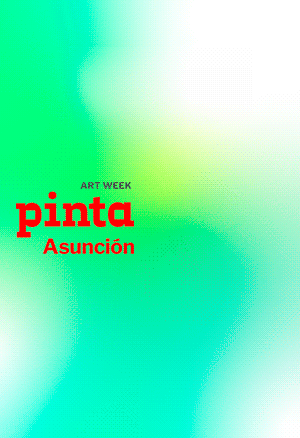Patricia Belli
Americas Collection, Miami
Patricia Belli (Nicaragua, 1964) explores the uncertain nature of existence through installations featuring machines that draw patterns of movement and objects that reflect the fragile construction of equilibrium.

Her ontological search has its point of departure in the interdependence that exists between the diverse kingdoms, and in the infinite thirst for knowledge that differentiates – or separates? – human beings from other creatures. But far from the pretentiousness of a science that in the 19th century believed it was about to decipher all the codes, her artistic inquiry is marked by awareness of the vulnerability that all beings share.
Belli – conscious of the terror and the wonder that existence produces in human beings – practices different strategies to construct balance from the center of the vital tension created by the never-ending interplay between chaos and order. She can appropriate the language of nature, codified by civilization through devices, and apply the laws of physics to create artistic objects that are ontological propositions as well as bodies of knowledge- epistemes- with a protective function. In her previous series of moving objects equilibrium was crucial.
Her observation of the elements of disasters that unify beauty and destruction – like the spiral eye of hurricanes – is a way of confirming the uncontrollable factor that rules natural forces as well as our existence. Her investigation led to the construction of machines that draw movements. These can range, depending on their mechanism and the expertise of the person operating them, between synchronized or regular figures and chaotic figures.
The geometric figures that emerge from the machines that she built with meticulous ability (after all, she is the daughter of a carpenter and a seamstress) were the result of a search for apparently harmonic and controlled representations of uncontrollable natural phenomena. They are derivations of the “harmonograph” –a machine invented in the 19th century that makes spiral drawings known as Lissajous curves based on the movement of pendulums. These traces contain the paradox of creating rational geometric forms that represent natural disasters, and that, on the other hand, are distant from the hyper-realistic paintings that Belli used to make of people who drowned under these circumstances.
Far from the playful atmosphere of the painting machine that Raymond Roussell invented in his hallucinated literature, or from the futurists’ fascination with technology, her machines materialize philosophical postulates. Belli does not feed the imagination of the science fiction narratives that prefigured social changes through technological relations. She observes the vital Uncertainty Principle – postulated in Physics by Heisenberg –, confronting us with the paradox of how even geometric figures made by machines are unpredictable even in the best scenario, when the friction is right.
By inviting us to unleash the movement that will make the drawing, Belli transforms us into spectators of the uncertain, and makes us observe a stage that is a reflection of what is out of our control. But she also makes us experiment, through our participation in an artistic exercise, the privilege of being part of a vital game.
A piece included in the show featuring a branch that pierces with its thorns the fabric that it is sown to, reinforces the poetry of this exhibition, bringing us closer to the other kingdoms by using our insignificance in the face of the uncontrollable, and the experience of vulnerability. However, it also reminds us that once we escape disaster we are able to construct science, or turn fear and the consciousness of the feeling of uncertainty into art as a form of salvation. In a way, Belli’s drawing machines resituate the definition of the frontier between nature and culture.






